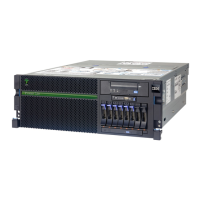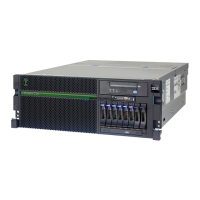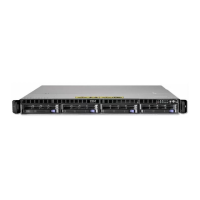132 IBM Power 770 and 780 (9117-MMD, 9179-MHD) Technical Overview and Introduction
3.4.1 PowerVM editions
This section provides information about the virtualization capabilities of the PowerVM. The
three editions of PowerVM are suited for various purposes:
PowerVM Express Edition
This edition is designed for customers who want an introduction to more advanced
virtualization features at a highly affordable price, generally in single-server projects.
PowerVM Standard Edition
This edition provides advanced virtualization functions and is intended for production
deployments and server consolidation.
PowerVM Enterprise Edition
This edition is suitable for large server deployments such as multi-server deployments and
cloud infrastructure. It includes unique features like Active Memory Sharing and Live
Partition Mobility.
Table 3-3 lists the editions of PowerVM that are available on Power 770 and Power 780.
Table 3-3 Availability of PowerVM per POWER7+ processor technology-based server model
For more information about the features included on each version of PowerVM, see IBM
PowerVM Virtualization Introduction and Configuration, SG24-7940-04.
3.4.2 Logical partitions (LPARs)
LPARs and virtualization increase utilization of system resources and add a new level of
configuration possibilities. This section provides details and configuration specifications
about this topic.
Logical partitioning
Logical partitioning was introduced with the POWER4 processor-based product line and the
AIX Version 5.1, Red Hat Enterprise Linux 3.0 and SUSE Linux Enterprise Server 9.0
operating systems. This technology offered the capability to divide a pSeries system into
separate logical systems, allowing each LPAR to run an operating environment on dedicated
attached devices, such as processors, memory, and I/O components.
Later, dynamic logical partitioning increased the flexibility, allowing selected system
resources, such as processors, memory, and I/O components, to be added and deleted from
logical partitions while they are executing. AIX Version 5.2, with all the necessary
enhancements to enable dynamic LPAR, was introduced in 2002. At the same time, Red Hat
Enterprise Linux 5 and SUSE Linux Enterprise 9.0 were also able do support dynamic logical
partitioning. The ability to reconfigure dynamic LPARs encourages system administrators to
dynamically redefine all available system resources to reach the optimum capacity for each
defined dynamic LPAR.
PowerVM editions Express Standard Enterprise
IBM Power 770 N/A FC 7942 FC 7995
IBM Power 780 N/A FC 7942 FC 7995
HMC management: At the time of writing, the IBM Power 770 (9117-MMD) and
Power 780 (9179-MHD) can be managed only by the Hardware Management Console.

